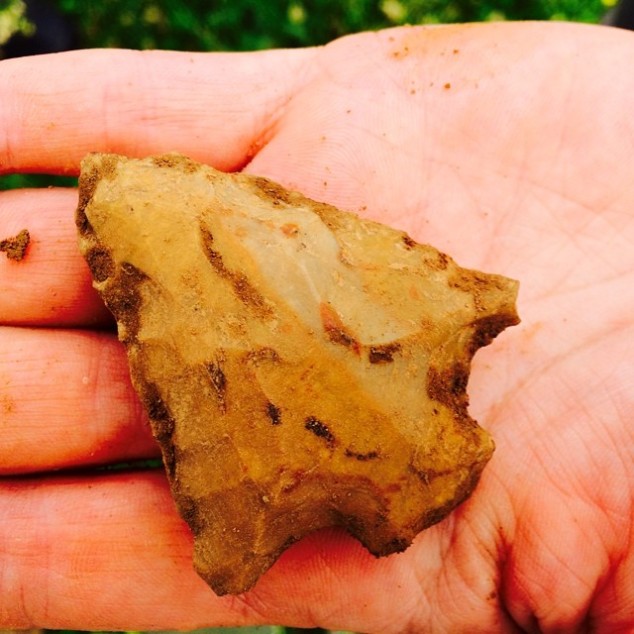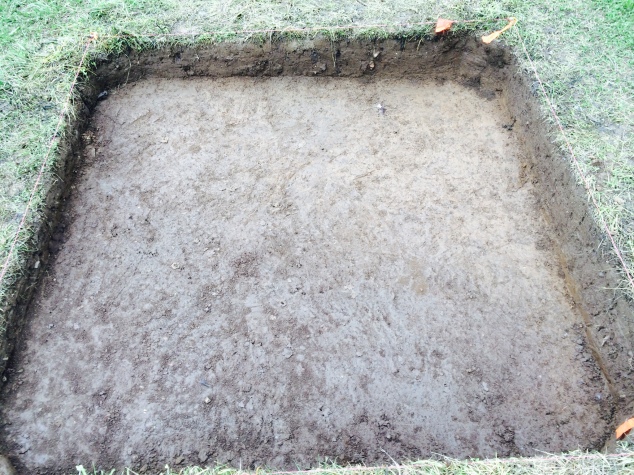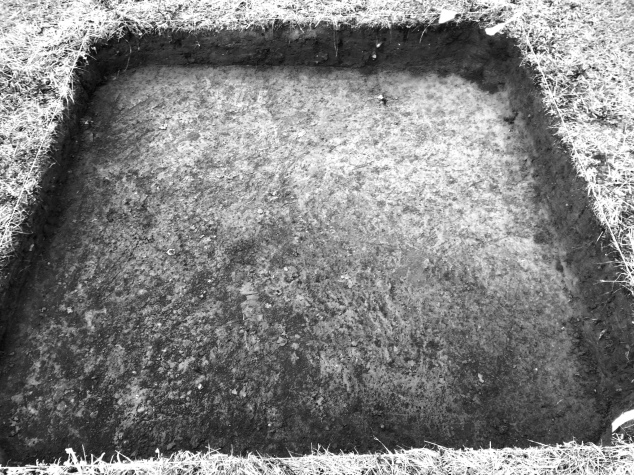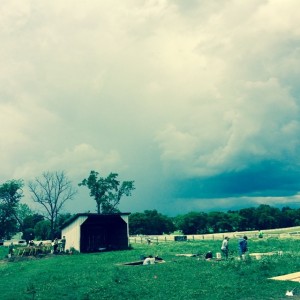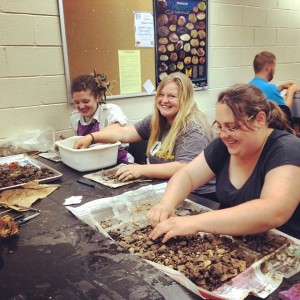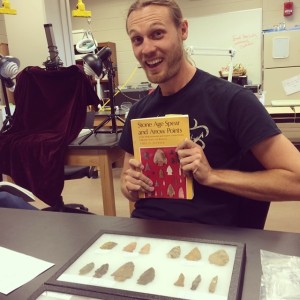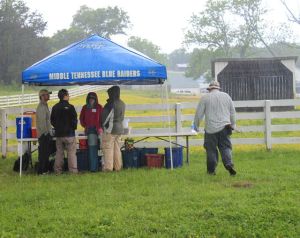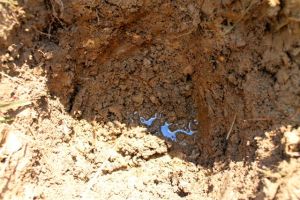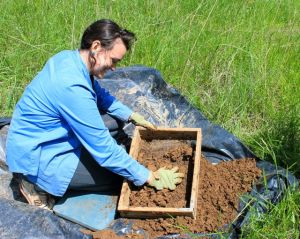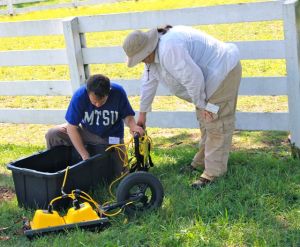— post by Dr. Peres
We have just finished Week 5 of the MTSU Field School at Magnolia Valley. This means only TWO WEEKS left before we close the site.
Monday was a complete wash and we spent the day in the lab washing, sorting, and bagging artifacts for analysis later this summer.
We were able to start our Tuesday at the field site and get in a few hours of work before the rain rolled in and we had to close up the site for the day. Just as we finished closing up the site and were preparing to head back to campus, we noticed the field school van had a punctured tire and was quickly going flat. Luckily, Field Assistant Joey K., was able to change the tire so we could get it back to motor pool and get a “fresh” van. The rest of the day was spent in the MTSU Archaeology Teaching Lab. Jesse gave a mini-lecture on lithic analysis and I gave a talk on how to prepare a Curriculum Vitae (CV) — basically a long resume that details one’s education, work experience, research, publications, etc.
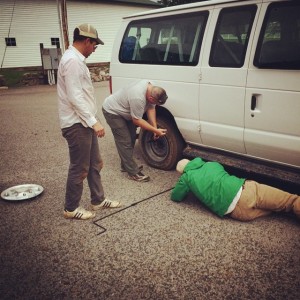
Field Assistant Joey Keasler changes the flat tire on the field school van (with help from the students). Thanks guys!
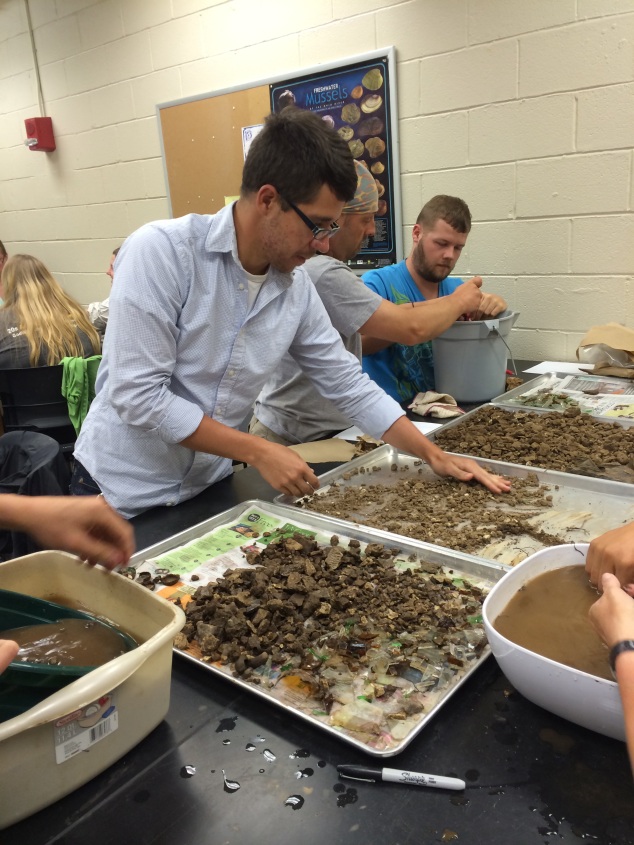
Artifact washing in the MTSU Archaeology Lab (Nathan Allison in the foreground, Josh Bicknell in the background; hands belong to various students who wish to remain anonymous).
Finally, Wednesday morning arrived, sunny and mild. Everyone was ready to be on-site and move more dirt! We are all in the groove of the daily morning routine of uncovering the units and setting up the equipment in the mornings, schnitting, troweling, filling out paperwork, and screening for artifacts. Everyone knows what an artifact is — any object made, modified, or used by humans.
This week we introduced the students to the art form of feature identification. A feature is a non-moveable area that indicates human activity — such as a hearth, building wall trench, or storage pit. Features are some of the most important things we identify in the field and why we excavate in a controlled scientific manner. Identifying features is a bit of an art form and involves a lot of standing back and studying the soils exposed in the excavation units to determine changes in colors/textures/inclusions. Sometimes these changes are flick-you-on-the-forehead-obvious; other times it takes the trained eye of a seasoned archaeologist to tease them out.
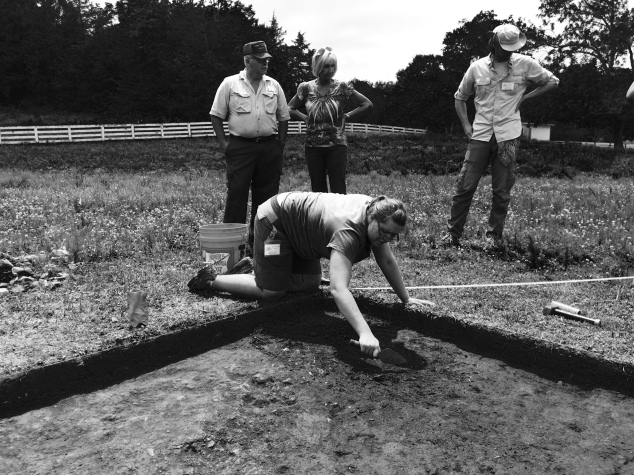
Jessica O. trowels the floor of this unit to expose Feature 6. The unit directly to the west (the right in the photo) will be opened next to capture more of the feature.
Can you spy the feature (Feature 4) in this color photo? (Scroll down to the next picture to see the unit in black & white.)
Same unit, only with a black and white filter applied (again – photo is for illustrative purposes, NOT an official curatorial photo). NOW do you see the feature? (Hint: it is dark soil on the lower 1/2 of the unit).
So far we have identified 5 cultural features (meaning ones created by humans) and one non-cultural feature (meaning likely remnants of where a tree or root once were). The five cultural features are in areas that we targeted specifically due to the remote sensing data Tim DeSmet generated early in the project. Over the next two weeks we will continue to expose these features by opening up adjacent units. We will then document them (by mapping the plan view and photographs) before excavating them. More on that in a later post.
Looking to see who visited us this week? Check out our Facebook page and Flickr account for photos!

